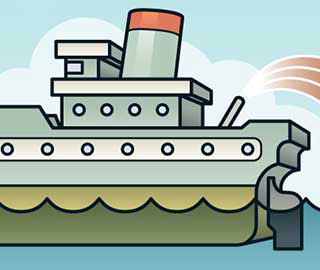
<a href="http://www.flickr.com/photos/illuminating9_11/3448233615/">Illuminating9_11</a> via CC license.
During a panel discussion at last week’s Asilomar International Conference on Climate Intervention Technologies, Mashahiro Sugiyama, a researcher for Japan’s Central Research Institute of Electric Power Industry, stepped to the microphone to point out the obvious: Nearly everyone in the room was from the United States and the United Kingdom. There were no researchers from China, Russia, or Africa at the conference—and just one from India.
Afterward, Sugiyama stressed to me that while most climate-intervention research is being done in America and the UK, the Asilomar meeting was about more than science. The goal, he said, was to develop ground rules to help scientists navigate the legal, ethical, and political implications of proposed strategies to counter global warming—and to work with governments and global coalitions to regulate them appropriately.
According to David Keith, a researcher at the University of Calgary who has studied climate intervention for 20 years, long-term field tests are the only way to truly predict how spraying sulfur aerosols into the atmosphere—one proposed climate intervention—will affect global temperature, weather, and other factors. The tests themselves could lead to drought and dangerous weather patterns; entire communities could suffer, and people might well die. “You need input from other countries, and I do not see many here,” Sugiyama said.
Pablo Suarez, associate director of programs for the Red Cross/Red Crescent Climate Centre couldn’t agree more. He was the only speaker on the opening day of the Asilomar conference to challenge its underlying premise—that geoengineering is an unpalatable fix for a worse problem: Even when trying to address global warming’s consequences, Suarez said, we often do more harm than good.
He cited as a metaphor a case involving the Senegal River, which empties into the Atlantic Ocean, and floods regularly. Hoping to protect a large town, African engineers recently dug a channel to divert floodwater toward the Atlantic. But the project led to erosion of a land barrier protecting a smaller village from the ocean. In February, Suarez said, six people died as a result. He sees the mishap as a cautionary tale for geoengineering: that those with the fewest resources and the least say tend to suffer most from unintended consequences. “We let them eat the risk that we create,” he said.
In Suarez’s view, the Asilomar conference and others like it must find ways to represent the views of developing nations lest the meetings turn into high-minded discussions of science that miss the big picture. Global average temperature change is not the most important number, he told me. “The metric has to be the alleviation of human suffering.”












